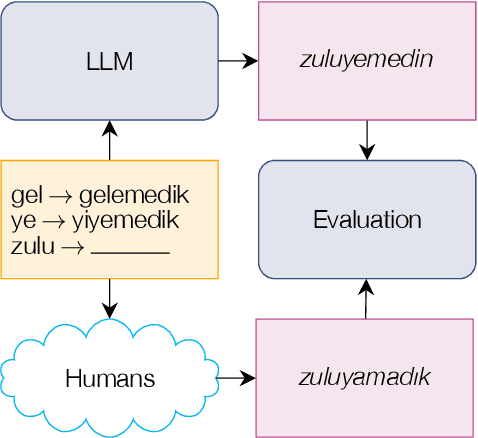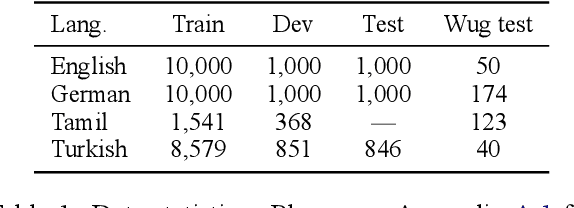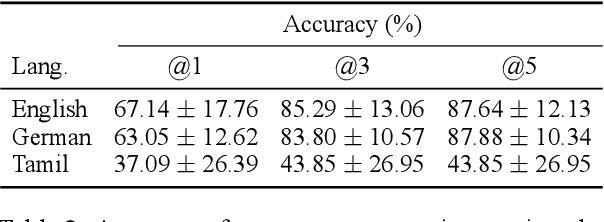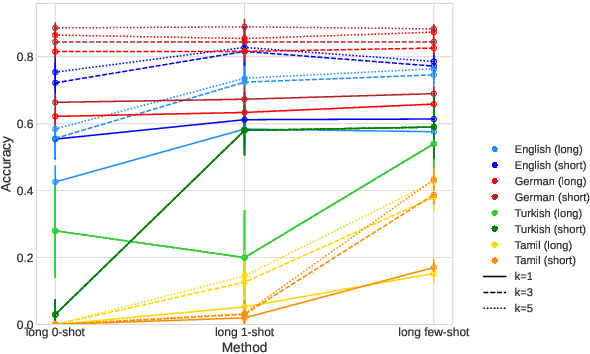Anjali Kantharuban
Pangea: A Fully Open Multilingual Multimodal LLM for 39 Languages
Oct 21, 2024Abstract:Despite recent advances in multimodal large language models (MLLMs), their development has predominantly focused on English- and western-centric datasets and tasks, leaving most of the world's languages and diverse cultural contexts underrepresented. This paper introduces Pangea, a multilingual multimodal LLM trained on PangeaIns, a diverse 6M instruction dataset spanning 39 languages. PangeaIns features: 1) high-quality English instructions, 2) carefully machine-translated instructions, and 3) culturally relevant multimodal tasks to ensure cross-cultural coverage. To rigorously assess models' capabilities, we introduce PangeaBench, a holistic evaluation suite encompassing 14 datasets covering 47 languages. Results show that Pangea significantly outperforms existing open-source models in multilingual settings and diverse cultural contexts. Ablation studies further reveal the importance of English data proportions, language popularity, and the number of multimodal training samples on overall performance. We fully open-source our data, code, and trained checkpoints, to facilitate the development of inclusive and robust multilingual MLLMs, promoting equity and accessibility across a broader linguistic and cultural spectrum.
Stereotype or Personalization? User Identity Biases Chatbot Recommendations
Oct 08, 2024Abstract:We demonstrate that when people use large language models (LLMs) to generate recommendations, the LLMs produce responses that reflect both what the user wants and who the user is. While personalized recommendations are often desired by users, it can be difficult in practice to distinguish cases of bias from cases of personalization: we find that models generate racially stereotypical recommendations regardless of whether the user revealed their identity intentionally through explicit indications or unintentionally through implicit cues. We argue that chatbots ought to transparently indicate when recommendations are influenced by a user's revealed identity characteristics, but observe that they currently fail to do so. Our experiments show that even though a user's revealed identity significantly influences model recommendations (p < 0.001), model responses obfuscate this fact in response to user queries. This bias and lack of transparency occurs consistently across multiple popular consumer LLMs (gpt-4o-mini, gpt-4-turbo, llama-3-70B, and claude-3.5) and for four American racial groups.
Counting the Bugs in ChatGPT's Wugs: A Multilingual Investigation into the Morphological Capabilities of a Large Language Model
Oct 26, 2023



Abstract:Large language models (LLMs) have recently reached an impressive level of linguistic capability, prompting comparisons with human language skills. However, there have been relatively few systematic inquiries into the linguistic capabilities of the latest generation of LLMs, and those studies that do exist (i) ignore the remarkable ability of humans to generalize, (ii) focus only on English, and (iii) investigate syntax or semantics and overlook other capabilities that lie at the heart of human language, like morphology. Here, we close these gaps by conducting the first rigorous analysis of the morphological capabilities of ChatGPT in four typologically varied languages (specifically, English, German, Tamil, and Turkish). We apply a version of Berko's (1958) wug test to ChatGPT, using novel, uncontaminated datasets for the four examined languages. We find that ChatGPT massively underperforms purpose-built systems, particularly in English. Overall, our results -- through the lens of morphology -- cast a new light on the linguistic capabilities of ChatGPT, suggesting that claims of human-like language skills are premature and misleading.
Quantifying the Dialect Gap and its Correlates Across Languages
Oct 23, 2023



Abstract:Historically, researchers and consumers have noticed a decrease in quality when applying NLP tools to minority variants of languages (i.e. Puerto Rican Spanish or Swiss German), but studies exploring this have been limited to a select few languages. Additionally, past studies have mainly been conducted in a monolingual context, so cross-linguistic trends have not been identified and tied to external factors. In this work, we conduct a comprehensive evaluation of the most influential, state-of-the-art large language models (LLMs) across two high-use applications, machine translation and automatic speech recognition, to assess their functionality on the regional dialects of several high- and low-resource languages. Additionally, we analyze how the regional dialect gap is correlated with economic, social, and linguistic factors. The impact of training data, including related factors like dataset size and its construction procedure, is shown to be significant but not consistent across models or languages, meaning a one-size-fits-all approach cannot be taken in solving the dialect gap. This work will lay the foundation for furthering the field of dialectal NLP by laying out evident disparities and identifying possible pathways for addressing them through mindful data collection.
 Add to Chrome
Add to Chrome Add to Firefox
Add to Firefox Add to Edge
Add to Edge